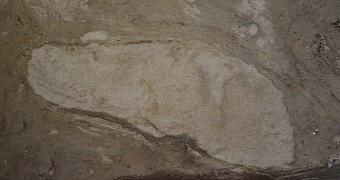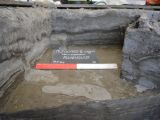While exploring Denmark's Lolland island in the Baltic Sea, archaeologists came across several human footprints. They now say that these footprints are millennia old and that they were left behind by folks who used to live and fish in the area.
More precisely, it is believed that the marks, photos of which are included in the gallery below, were created about 5,000 years ago, when a pair Stone Age fishermen decided to go walkies on this patch of land in the Baltic Sea.
A one-of-a-kind archaeological discovery
The footprints were found in a dried-up fjord. Archaeologists are quite convinced that they were left behind by fishermen because they were unearthed along an ancient fishing fence, i.e. a fence placed in water to catch fish or at least confine them to a certain area.
By the looks of it, Denmark's Lolland island has until now yielded several other artifacts dating back to ancient times. Thus, researchers exploring it have so far recovered millennia-old tools and even bits and pieces of pottery that our ancestors used.
However, it appears that the marks found in the dried-up fjord are the first Stone Age human footprints to have until now been discovered not just on the island of Lolland, but anywhere in Denmark, Live Science tells us.
“This is really quite extraordinary, finding footprints from humans,” archaeologist Terje Stafseth with Denmark's Museum Lolland-Falster said in a statement announcing the discovery of these ancient marks left behind by Ice Age fishermen.
“Normally, what we find is their rubbish in the form of tools and pottery, but here, we suddenly have a completely different type of trace from the past, footprints left by a human being,” the researcher went on to explain.
Life on the island of Lolland in ancient times
Specialist Terje Starseth and colleagues say that, thousands of years ago, the now dried-up fjords on the island of Lolland in the Baltic Sea were teeming with life. Thus, they were filled with water, and Stone Age people often visited them either to fish or to offer sacrifices to the sea.
When looking to catch fish, people who lived in the area thousands of years ago installed several wooden fences in a fjord's shallow water. The incoming tide brought fish close to these fences, and when the water started to move back to the open sea, the creatures became trapped.
Apart from fishing, the folks who populated this corner of the world millennia ago had a knack for farming. Specifically, archaeologists say that they looked after domestic animals and that, having killed them, they sometimes offered their skulls to the sea.

 14 DAY TRIAL //
14 DAY TRIAL // 



